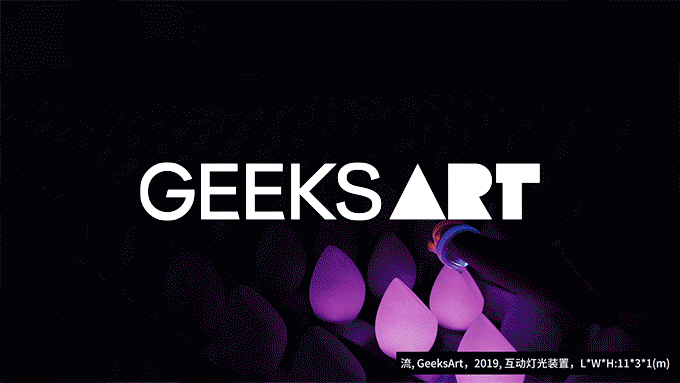北京瑜舍是隈研吾在北京的标志性建筑设计作品。近日,Kokaistudios为瑜舍设计地下一层的室内活动空间——公社Commune,在充分考虑内在灵活性的同时更融合了中国传统建筑元素。该项目包含主空间及走廊区域,巧妙隐藏的滑动门设计让这个地下空间具备更多拓展的可能性。作为可适用于各种活动的高融合度场景空间,庭院的概念贯穿全局,很好延续酒店原有设计元素的同时又与下沉花园紧密相连。
Building on Kengo Kuma’s iconic architecture, Kokaistudios’ recently reconfigured events area on LG Floor – Commune – for The Opposite House in Beijing combines elements of traditional Chinese architecture with inbuilt flexibility. Comprising a main space and connecting corridor, cleverly concealed sliding doors mean the lower ground level venue can be configured in multiple ways. A neutral backdrop for events of all kinds, a palpable garden motif nonetheless runs throughout the space, drawing connections with the hotel’s celebrated design legacy as well as the sunken courtyard garden in its immediate vicinity.
▲主厅入口 entrance of the main hall
Kokaistudios对北京瑜舍的底层活动空间重新设计,形成了灵活、多功能的活动空间——公社。为保持建筑原有四合院式的传统设计语言,设计团队从酒店的下沉花园获得灵感,扩展既定主题,创造了完整而独特空间。设计安置了特色的折叠门和玻璃隔墙,让这个756平方米的主空间和走廊区域可以承办各种类型和规模的活动,为这家久负盛名的酒店开辟了新的可能性。
In Beijing, Kokaistudios’ overhaul of The Opposite House lower ground-level space has resulted in fully flexible multifunctional event space, Commune. In keeping with the property’s original design language of a traditional Chinese courtyard home, and taking inspiration from the adjoining sunken garden, the team extended these established motifs to create distinctive areas throughout. Adaptable thanks to folding doors and glass partition walls, the 756 sqm area, which includes a surrounding corridor, can be configured in multiple ways for events of all types and sizes, opening up new possibilities for this most prestigious of hotels.
▲主厅 the main hall
瑜舍邀请Kokaistudios将其原有的底层餐厅区和走廊改造成公社,为私人宴会和艺术展览提供多功能活动空间。为实现各种功能需求的最大化,设计在主多功能厅中间建立滑动隔断系统,通过滑动门的开合以完成该功能空间划分的需求,以适用于不同使用需求的客户。设计除了满足功能需求以外,其空间拓展性也极强,比如雕塑天花板带有隐藏的悬挂系统,它可以根据客户的要求随时进行调整和校准高度。Kokaistudios改造的功能空间直接衔接由如恩设计的活动场地Studio,并可通往酒店下沉庭院、中央电梯至大堂以及三里屯太古里购物中心,在空间中建立了新的功能层次,并与酒店的主要设计元素与场景产生共鸣。
The Opposite House invited Kokaistudios to transform a lower ground level restaurant area and corridor into Commune, a multifunctional events space for eventsand gallery alike. For maximum adaptability, the main space can be divided into two distinct function rooms, linked by sliding doors to allow for various configurations. Largely neutral save for key features that combine design and functionality – a sculptural ceiling with hidden hanging systems, for example – it can be readily adjusted and aligned according to client specifications. Already connected to Neri&Hu’s existing Space – Studio and with multiple access points to the hotel’s courtyard, central lift lobby, and the adjacent shopping mall – TaiKoo Li Sanlitun, Kokaistudios’ renovation builds new layers into the space, and resonates with the property unmistakable design approach.
▲小厅 the small event hall
设计将空间想象成一个庭间院落,可经由酒店的下沉花园进入,主空间以连贯的水磨石铺地在视觉上与周围环境连接。建筑北侧原有的玻璃立面提供了充足的采光,天花造型以悬挂的半开放天花木板构成,使空间进一步向上延伸,拓展了空间的视觉高度与亮度。这个装置由2355块纵横交错的木片组成,适度地分块组合,将灯具路轨、喷淋、音响等系统很好地隐藏在造型上缘,也可以隐藏悬挂摄影作品、海报和其他活动物料的展示构件。可折叠的移动隔断系统创造了一面可打开的隔墙,使改造后的公社空间可以被分成大小两个空间。另外还有另一组折叠门安装在多功能厅的尽端,其背后是通高的LED屏幕,可以根据活动的需要将屏幕显示或隐藏起来。
Imagined as a Pavilion and accessed through the hotel’s sunken garden, the main space visually connects with its environs through terrazzo paving slabs. With original glass facade on its north-facing side affording plentiful daylight, an open ceiling structure implies height to further extend and brighten the space. Comprising some 2,355 crosswise wood pieces, the installation is as functional as it is intricate: concealing systems including track lighting and sprinklers, it also features hooks for the hanging of photographs, posters, and other event collateral. Midway, a series of sliding partition doors create a foldable partition wall, allowing the transformed space to be divided into two different size spaces respectively. Another set of folding doors is installed at its far end of gallery to conceal or reveal a ceiling-height LED screen.
▲走道空间 Corridor space
▲阶梯展示细节 Step display detail
多功能的走廊分布在公社空间的东、南两侧。主功能厅前侧放置着简约、素净的木质方桌接待台;而在其他空间,散落点缀着简单的阶梯式座位,该区域是主空间的入口,可以用于接待、商务候客、摆放临时装置或举办小型展览。设计稍微扩大了空间的尺度,采用温暖近人的哑光黄铜不锈钢营造入口的框架,让入口区域成为整个公社空间的标识。
On its East and South sides, the main space is flanked by a multifunctional corridor. With minimalist, neutral wooden blocks doubling as a welcome desk; and elsewhere, as occasional tables punctuating simple stepped seating, the area hosts small-scale showcases; is as a reception, waiting, and breakout area; and primary access point for the main space. Now enlarged slightly, and framed with warm and inviting brass-finish stainless steel, the striking doorway becomes a focal point of the entire basement level.
▲小厅 the small event hall
为地下空间引入充裕的自然光是优先思考的要点,因此设计采用大面积玻璃隔断将走廊区域与主空间做分隔。蚀刻格子的设计与酒店引人注目的立面相呼应,为保护隐私采用半透明材质,在夜晚也呈现出迷人的光芒。玻璃的使用是Kokaistudios在该项目中最主要的建筑设计手法之一:用玻璃材质取代了之前的封闭墙体,在酒店外廊南侧就可以俯瞰下方的泳池空间。
Maximizing natural light throughout the underground space was a particular priority. With this in mind, a glass partition separates the corridor area from the main space. Etched with a lattice design to echo the hotel’s striking facade, and semi-opaque for privacy, the material also creates a tantalizing evening-time glow. Glass also characterizes one of Kokaistudios’ most significant architectural interventions of the project: replacing the closed wall that stood before, a window looking down onto the hotel’s subterranean swimming pool now runs along the corridor’s outward-facing south side.
▲洗手间入口 restroom entrance
卫生间则进一步延续了传统中国园林的设计哲学,以抽象形式表现盆景植物的美感。温暖的黄铜色调晕染整个宽敞的空间,盆栽式的面盆置于镜前的地柜之上,增添了几分趣味性。
Further extending the design concept of a traditional Chinese garden, the bathrooms mark an abstract take on a grove of Bonsai trees. Spacious, and finished in warm brass tones, plant pot basins topped by mirrors lend a playful touch.
▲下沉花园 sunken garden
Kokaistudios在客观中立思考下翻新设计的公社极具灵活性及功能性,也为北京瑜舍的公社Commune功能空间带来了更多新的可能性。与此同时,中式花园的设计概念也向该原本业态的设计理念致敬。公社是在当代语境下对悠久传统的当代诠释,使其更敏锐、适应性更强,是对北京地标建筑的实用性升级。
A fully flexible area to cater to a range of function types and renovated with neutrality in mind, Kokaistudios’ lower ground level event space brings new possibilities to The Opposite House hotel. At the same time, the Chinese garden-inspired concept nods to the property’s celebrated design legacy. A contemporary take on time-old traditions, Commune marks a sensitive, adaptable, and above all, practical upgrade to a modern icon of Beijing.
▲平面图 plan


▲轴测空间组合 axonometric space combination

▲轴测设计分析 axonometric analysis diagram

▲从商场到公社入口 entrance from commercial to Commune

▲洗手间轴测图 rest room axonometrical diagram
项目信息——
项目名称:北京瑜舍公社
地点:中国,北京
室内面积:756平方米
下沉花园面积:327平方米
完工时间:2020年7月
客户:北京瑜舍
室内设计:Kokaistudios
首席设计师:Andrea Destefanis、 Filippo Gabbiani
项目经理:常青、孙文娟、张雅楠
设计团队:方玥、蒋斌、黄贤樱
摄影:Dirk Weiblen
撰文:Frances Arnold
媒体负责:Jacqueline Chiang
联络邮箱:Jacqueline@kokaistudios.com
Project Information——
Project name:Commune at The Opposite House
Location:Beijing, China
Interior Area:756sqm
Sunken Garden Area:327sqm
Date of completion:July, 2020
Client:The Opposite House
Interior Design:Kokaistudios
Chief Designers:Andrea Destefanis, Filippo Gabbiani
Design Managers:Chang Qing, Ada Sun, Suzy Zhang
Design Team:Vivian Fang, Alex Jiang, Senny Wong
Photography:Dirk Weiblen
Text:Frances Arnold
Media Contact:Jacqueline Chiang
Email:Jacqueline@kokaistudios.com

























